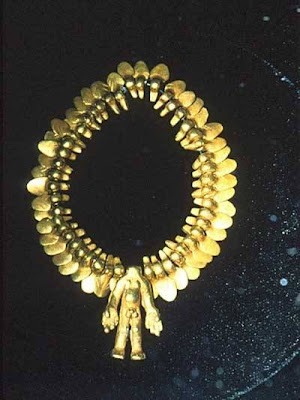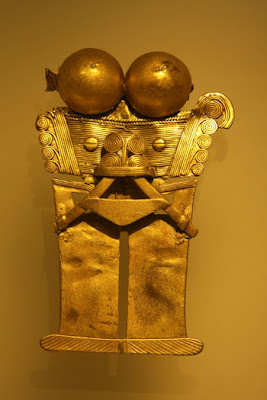Quimbaya
Es el nombre de una pequeña tribu del eje cafetero,la tribu de los quimbayas fue famosa en la conquista por las ricas joyas de oro,las cuales se distinguian por su realismo,acabado y delicadas formas,la ceramica quimbaya ,alcanzo el mayor grado de perfeccion en colombia,sobresale la calidad artistica de sus decoraciones.
Tairona
La sierra nevada de santa marta fue el centro de la zona arqueologica Tairona,alli fue el unico lugar de colombia donde los aborigenes alcanzaron a desarrollar grandes centros poblados y los comienzos de una arquitectura litica,los taironas practicaban una intensa agricultura en terrazas y campos artificialmente irrigados.
Muisca
En el antiplano cundi-boyacense ,habitaban los muiscas,los muiscas tenian avansada organisacion social,religiosa y economica,su comercio de sal ,mantas de algodon y esmeraldas atrajo la expedicion de quesada;en cambio la leyenda de "EL DORADO" de guatavita hizo venir a velalcazar a estas tierras,los orfebres del cacique de guatavita,eran conocidos por la excelencia de sus trabajos.
Sinu
En las hoyas del los rios sinu,san jorge y nechi,florecio la zona arqueologica Sinu ,esta zona muestra vestijios de haber sido densamente poblada,abitada desde miles de años antes de la llegada de las conquistadores,entre las tribus sinu,segun los cronistas existian templos en donde cabian mas de mil personas y adoraban idolos cubiertos de laminas de oro.
Tolima
Tolima se denomina la zona arqueologica,de los pueblos orfebres en dicho departamento,tanto los aguerridos indios pijaos con quienes lucharon los espanoles,fueron ricas en oro,se trata de poblaciones sedentarias ,con aguicultura de maiz,especializacion artesanal y activo comercio.
Calima
En la vertiente del el oceano pacifico,en el alto rio calima,esta localizada la zona arqueologica calima,se distingue por la espectacular orfebreria,en los cuales resaltan los grandes pectorales y diademas,la ceramica calima frecuentemente representada por figuras de hombre y de animales.




































































































